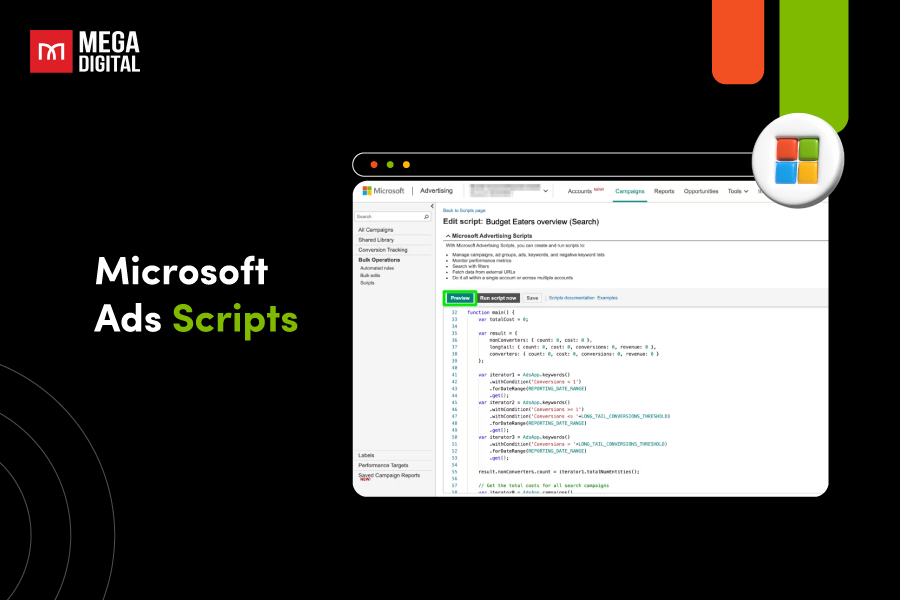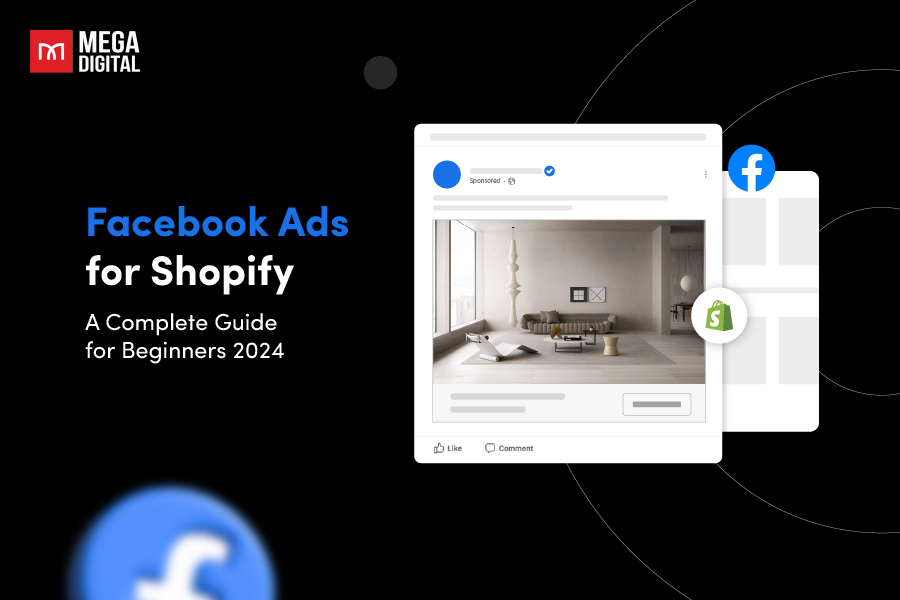When you start creating Facebook ads, one of the key steps is to target your audience. However, many people don’t quite get this right, leading to ads that don’t perform well and fail to make an impact. That’s why we’re here today—to break down why good Facebook segmentation is so important and give you practical tips.
What is Facebook Segmentation?
Facebook segmentation, also known as Facebook audience segmentation, is dividing your target audience into smaller, more specific groups based on shared characteristics.
By segmenting audiences, advertisers can craft content that feels more personalized and relevant, leading to increased engagement and greater success in their Facebook advertising efforts.
These characteristics can include:
- Demographics (age, location, income, etc.)
- Interests (hobbies, favorite brands, etc.)
- Behaviors (past purchases, website visits, etc.)
The Importance of Facebook Ads Segmentation
Facebook segmentation isn’t just a fancy marketing term; it’s a powerful tool that brings specific, tangible benefits to your business. Let’s dive into how Facebook segmentation can make a real difference for you.
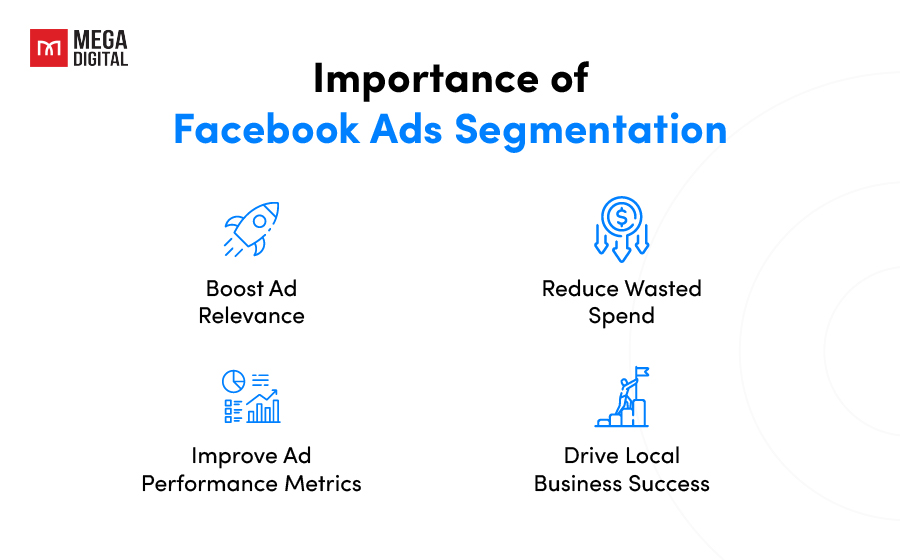
Boost Ad Relevance
Imagine if every ad you saw were something you cared about, you would be curious and click on these ads. That’s what segmentation does—it makes your ads relevant to your audience’s interests and behaviors.
When your audience feels like you understand their needs and interests, they’re more likely to interact with your ads. This means more clicks, likes, shares, and ultimately, more business for you.
For example, think about a pet supply store. By creating separate ads for dog owners and cat owners, each featuring products that cater specifically to their pets. The store can also make the ads more relevant and increase the likelihood of clicks and sales.
>>> Read more: How Do Experts Improve Facebook Relevance Score?
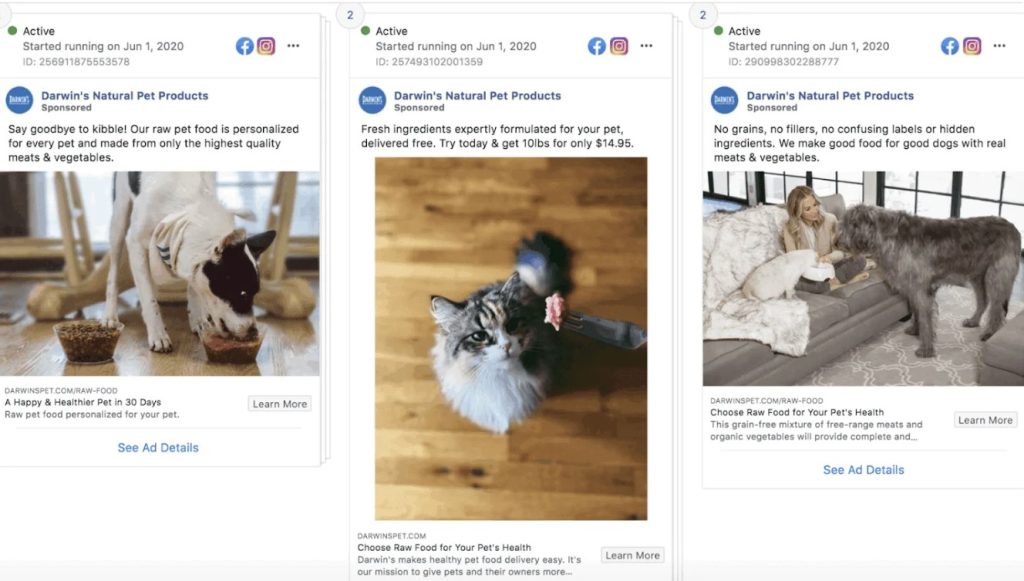
Reduce Wasted Spend
We all hate wasting money, right? Segmentation helps you allocate your ad budget more efficiently by targeting only the most promising segments of your audience. This way, you refrain from spending money on people who are unlikely to convert.
Improve Ad Performance Metrics
When your ads are set up for each audience group, they are more relevant and targeted.
As a results, key performance metrics like click-through rates (CTR) and conversion rates improve. Higher CTRs and CVRs show that your ads are hitting the mark, making your investment in Facebook advertising worthwhile.
Drive Local Business Success
For local businesses’ Facebook ads, segmentation can target ads to people within specific geographic areas, making it easier to drive foot traffic and local sales. This localization ensures that your ads reach people who are actually able to visit your store or use your services.

4 Types of Facebook Audience Segmentation
There are several Facebook segmentation strategies you can employ to create targeted audience segments:
1. Demographic Segmentation

This is the most basic form of segmentation, where you target users based on factors like age, gender, location, income, and education level.
You should use demographic segmentation when your product or service appeals to a specific demographic group such as high-end products, high-income, etc.
Example: L’Oréal used demographic segmentation to target women aged 25-40 for their anti-aging skincare products.
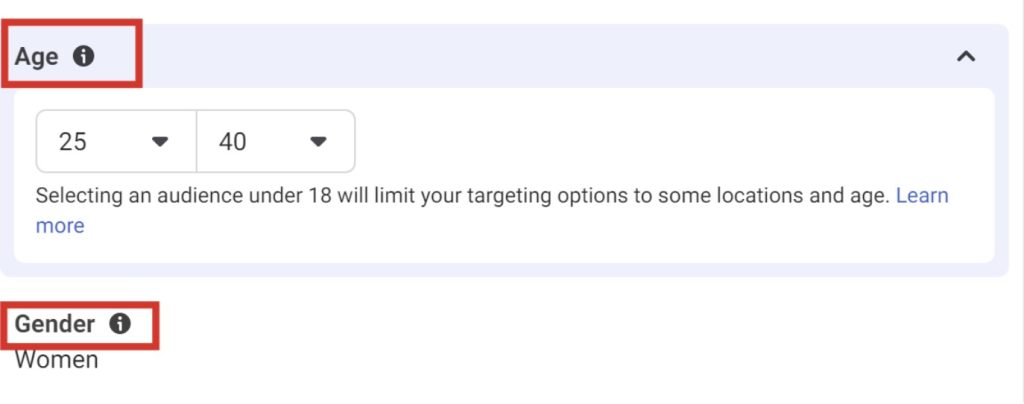
2. Geographic Segmentation
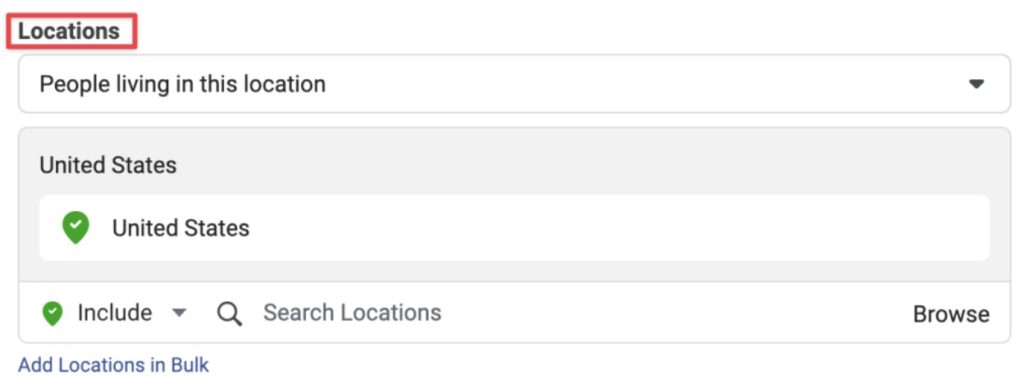
Geographic segmentation focuses on where your audience lives. This can range from countries and regions to cities and neighborhoods. It’s particularly useful for local businesses or when promoting events in specific locations.
Example: Domino’s Pizza uses geographic segmentation to target customers within a 10-mile radius of their pizza delivery locations.
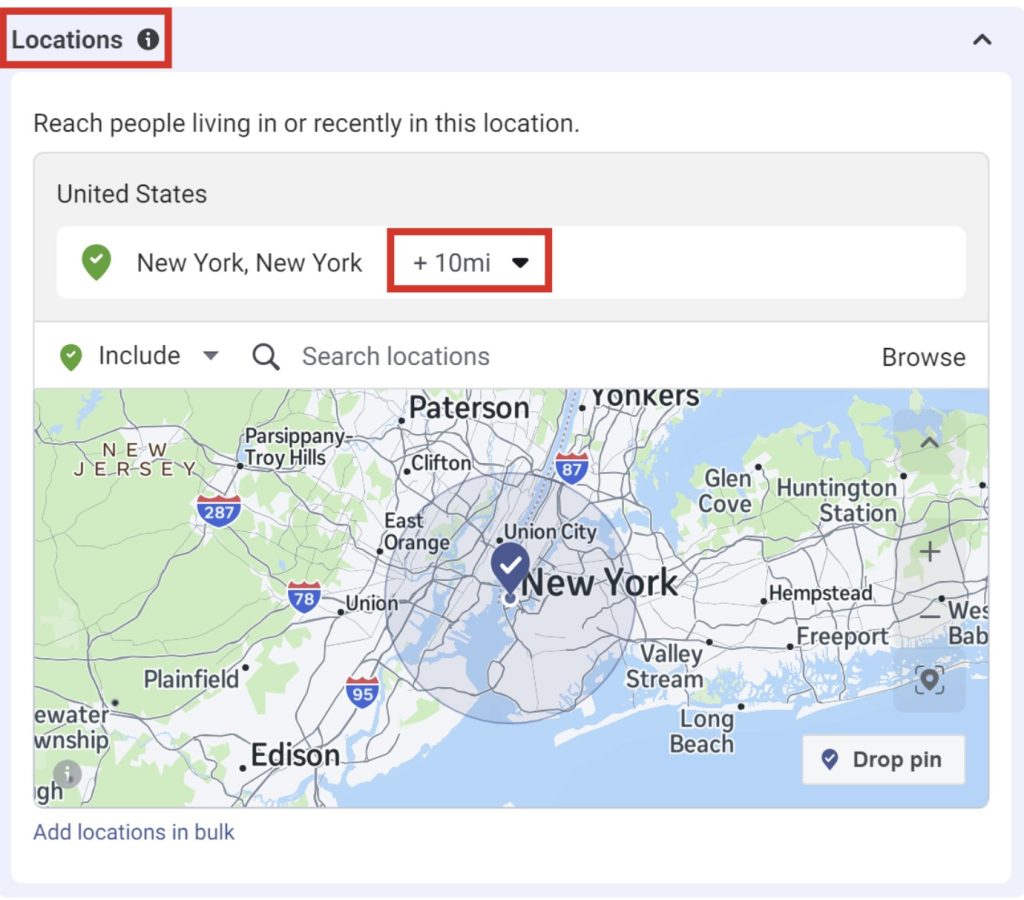
Keynote: Targeting an audience is like casting a net. You don’t want it so small you catch nothing, but too big and you might miss the valuable fish.
3. Detailed Targeting Segmentation
Detailed targeting segmentation is a powerful feature in Facebook Ads that allows advertisers to refine their audience based on specific demographics, interests, behaviors, and more.
Interest Segmentation
Interest-based segmentation targets users based on Facebook interest targeting or hobbies, and activities. This is great for reaching a broader audience with specific interests.
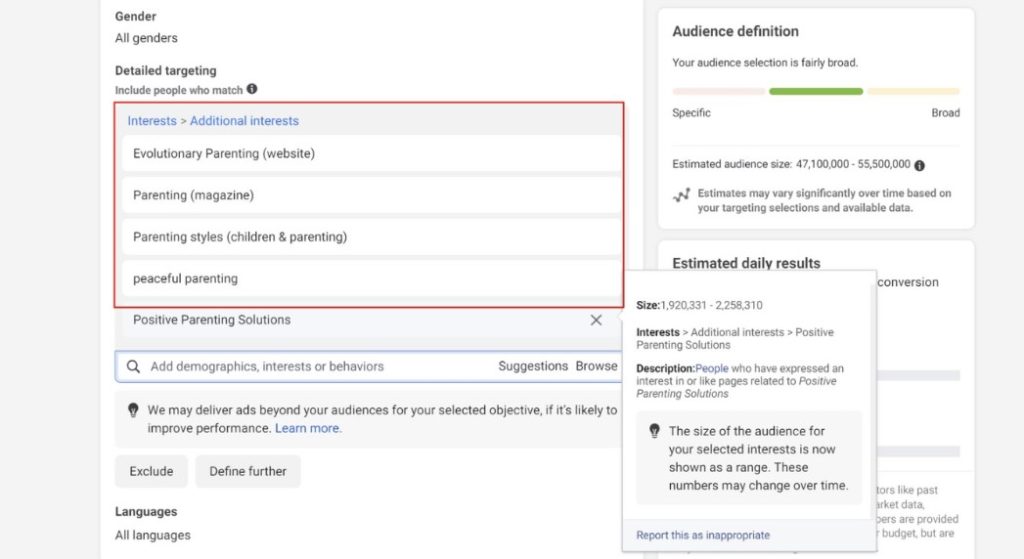
Behavioral Segmentation
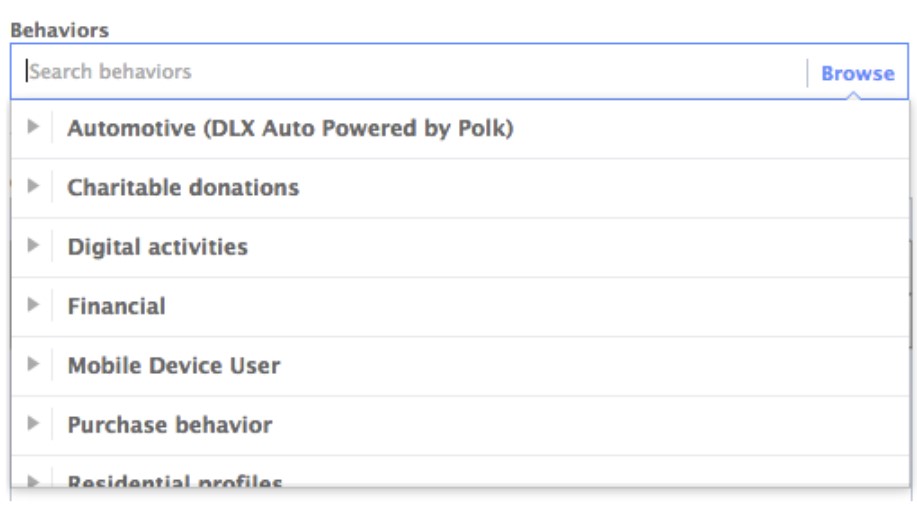
Behavioral segmentation analyzes the actions and behaviors of your audience, such as past purchases, browsing habits, and engagement levels. This allows you to retarget users who have shown interest in your product but haven’t converted yet, or to upsell to existing customers based on their purchase history.
Now, with Segment Anything Model, you can analyze user interactions and behaviors with Meta AI, after that Facebook algorithm use this data to provide your ads to potential audiences.
Example: Nike targeted detail to reach users interested in running, fitness, and have previously browsed their website’s basketball shoe category.
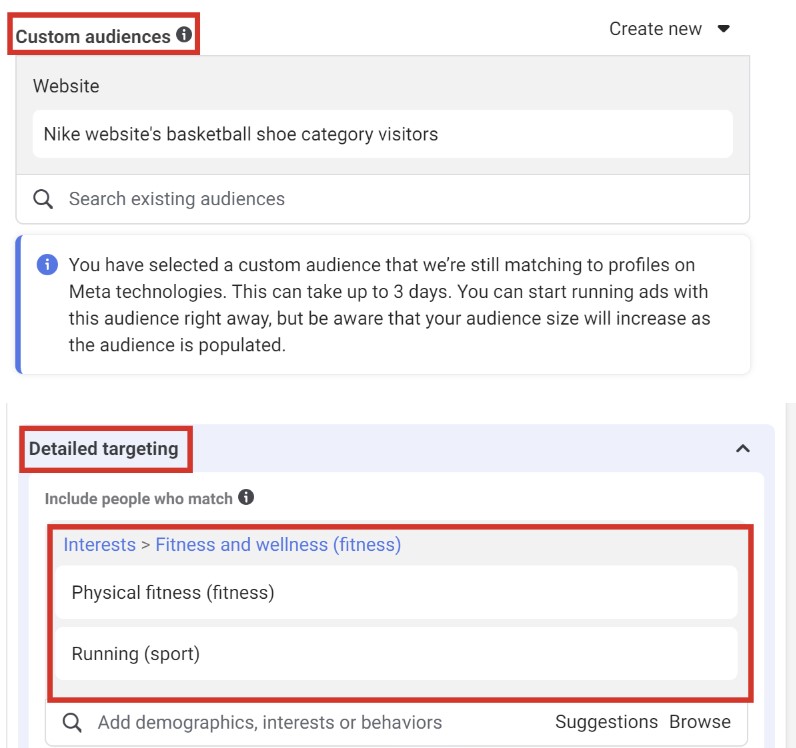
4. Device and placement segmentation
This segmentation focuses on targeting based on the device users are using or where ads are placed across Facebook’s platforms (e.g., news feed, Instagram feed, stories).
Example: Jasper’s Market targeted mobile users specifically for their grand opening via Facebook ads shown in the news feed, video reels and on Instagram news feed and explore.
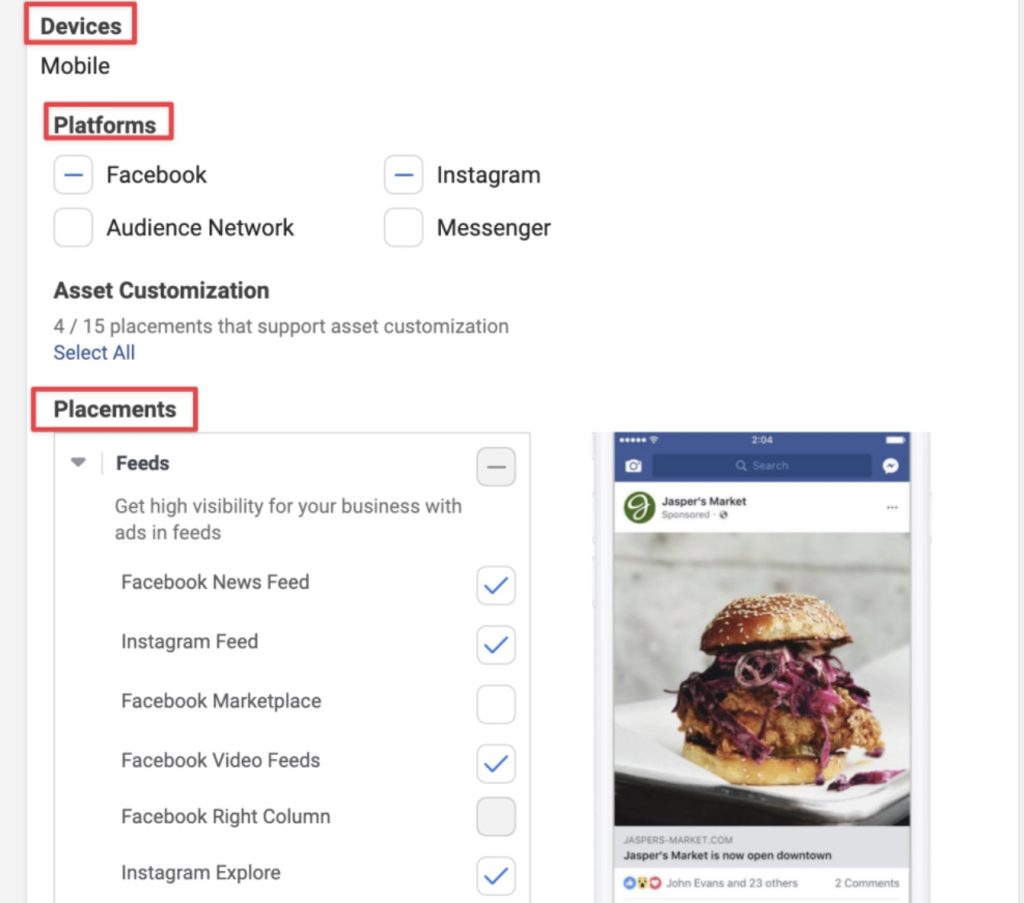
At Mega Digital, we believe that effective Facebook segmentation goes beyond basic targeting—it’s about delivering personalized experiences that resonate with your audience.
By dividing your audience into distinct segments based on specific criteria, you can tailor your ad content to address their unique needs and preferences, ultimately driving engagement and conversions.
Ready to transform your Facebook advertising strategy? Discover how our expertise can help you maximize ROI and achieve your marketing objectives.
How to Segment Your Facebook Ads
Segmenting your Facebook ads is crucial for reaching the right audience and maximizing your ad performance. Here’s a step-by-step guide on how you can do it effectively:
Define Your Audience Segments
Start by identifying the different groups within your target audience. By understanding your audience’s demographics, psychographics, and behaviors, you can create highly targeted ad content that resonates with their interests and needs.
You also can use Facebook Audience Insights to gather data about your existing audience. This tool provides detailed information about:
- Demographics: Age, gender, location, language, education, job title.
- Interests: Hobbies, favorite brands, activities, pages liked.
- Behaviors: Purchase history, device usage, online activity, engagement levels.
- Custom Audiences: Existing customers, website visitors, app users, email subscribers.
Create Custom Audiences
Using Facebook Custom Audiences to segment customers allows you to target specific groups with tailored ads.
First, identify your segmentation criteria such as demographics, behaviors, interests, past purchases, or website activity.
Next, gather customer data from your CRM, email lists, website analytics, or customer files, ensuring it includes relevant information like email addresses, phone numbers, or Facebook user IDs. Upload this data to Facebook’s Ads Manager to create a Custom Audience.
Finally, use these Custom Audiences to design and run targeted ad campaigns that address the specific needs and interests of each segment, thereby increasing engagement and conversion rates.
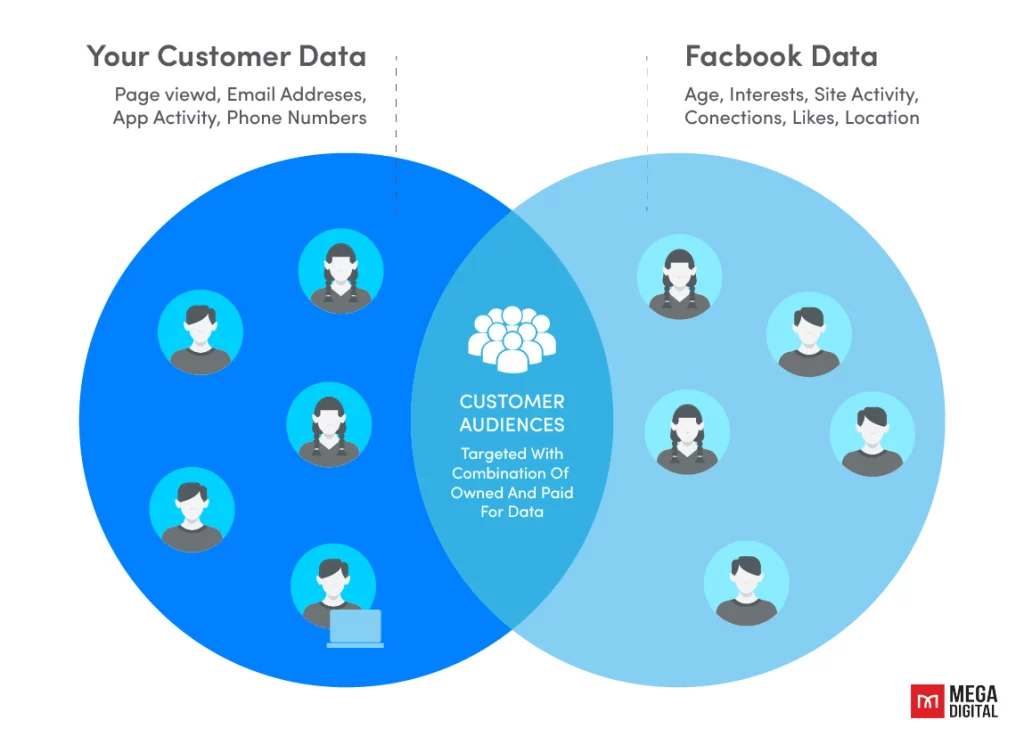
Use Lookalike Audiences
To segment customers using Facebook Lookalike Audiences, start by identifying a source audience that represents your ideal customers, such as a Custom Audience of your best customers or website visitors who have made purchases.
Ensure this source audience has at least 100 people. In Facebook Ads Manager, go to “Create Audience” and select “Lookalike Audience.” Upload your source audience data, then choose the country or region you want to target. Adjust the audience size to find the right balance between similarity and reach.
>>> Read more: How to Create Facebook Lookalike Audience to Increase Conversion
Common Segmentation Mistakes and How to Avoid Them
Segmenting your audience on Facebook is powerful, but it’s easy to make mistakes that can hinder your ad performance. Here are common segmentation pitfalls and how to steer clear of them:
#1. Over-segmenting
Creating too many narrowly defined segments can reduce your potential reach and limit campaign effectiveness.
Solution: Strike a balance by refining your segments based on specific criteria like demographics, interests, and behaviors. Aim for specific segments to be relevant but broad enough to reach a significant audience.
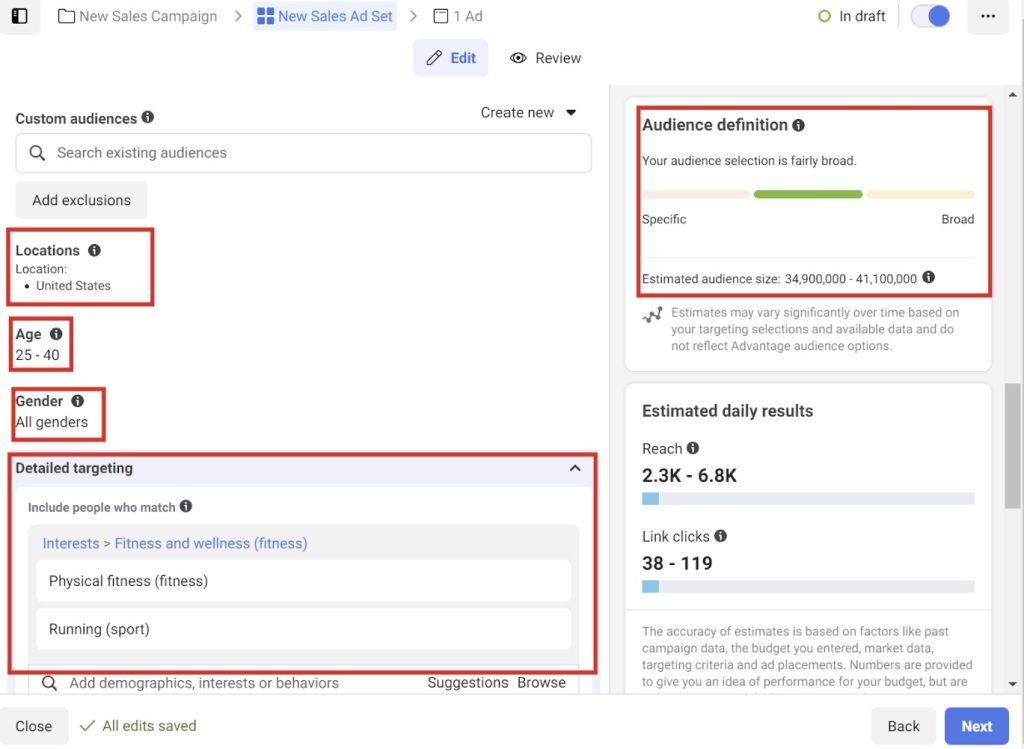
#2. Failing to Update Segmentation
Setting up segments and forgetting about them. Audience interests and behaviors change over time, and outdated segments can lead to irrelevant targeting and reduced ad performance.
Solution: Regularly review and update your audience segments to reflect current trends and preferences. Use Facebook Audience Insights to gather updated data and refine your targeting criteria accordingly.
#3. Not Testing Segments
Assuming your initial segments are optimal without testing different variations.
Solution: Conduct A/B testing with different segment combinations to identify which ones yield the best results. Use metrics like CTR, conversion rates, and ROI to measure performance and iterate accordingly.
How to Optimize Facebook Ads after Segmentation
Here’s how you can optimize your ads through segmentation:
Refine Targeting Criteria
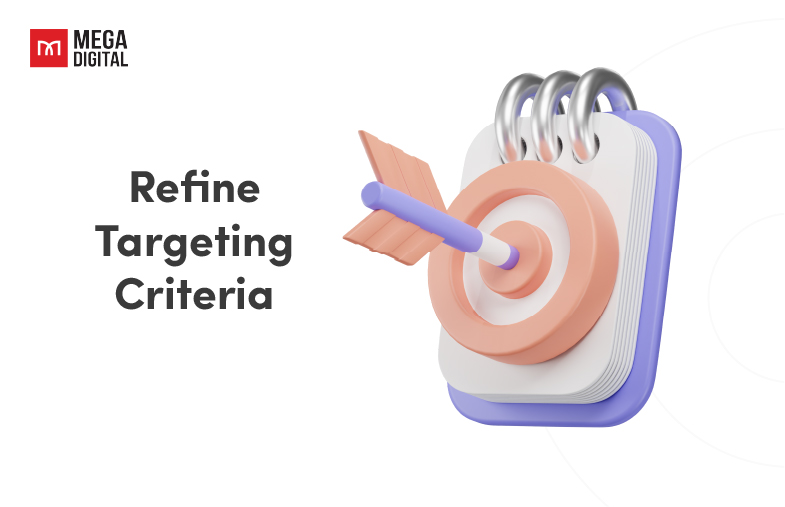
Continuously refine your targeting criteria to improve the relevance of your ads.
If certain segments are underperforming, analyze why they might not be engaging with your ads. It could be due to overly broad criteria or the need for more specific targeting. Adjust your demographics, interests, or behaviors to better align with the audience’s preferences.
This ongoing optimization helps ensure your ads are always reaching the right people.
Segment Your Ad Sets

By dividing your audience into smaller segments based on demographics, interests, or behaviors, you can deliver more relevant ads and improve ad performance metrics. Here are 2 ways to segment your ads:
- Use Facebook’s Targeting Options: Utilize Facebook’s detailed targeting options to create separate ad sets for different audience segments. Customize settings based on demographics (age, gender), interests (hobbies, activities), behaviors (purchase history, device usage), and more.
- Create Lookalike Audiences: Expand your reach by creating lookalike audiences based on your best-performing customer segments.
Segment Your Ad Creatives

Segmenting your ad creatives involves tailoring the visuals, messaging, and calls-to-action (CTAs) of your ads to resonate with different audience segments. This ensures that each segment receives personalized content that addresses their specific needs and preferences.
Regularly update your ad creatives to keep them fresh and engaging for each segment. This involves testing different ad formats, images, videos, and copy to see what resonates best with each group. By maintaining variety and relevance in your creatives, you can prevent ad fatigue and keep your audience interested. A/B testing different versions of your ads can also provide insights into what works best for each segment.
Final Word
Facebook segmentation is a powerful strategy that allows marketers to deliver highly targeted and personalized ads. Businesses can significantly enhance their marketing efforts and achieve better results by understanding and implementing various segmentation techniques, from demographic to psychographic.







